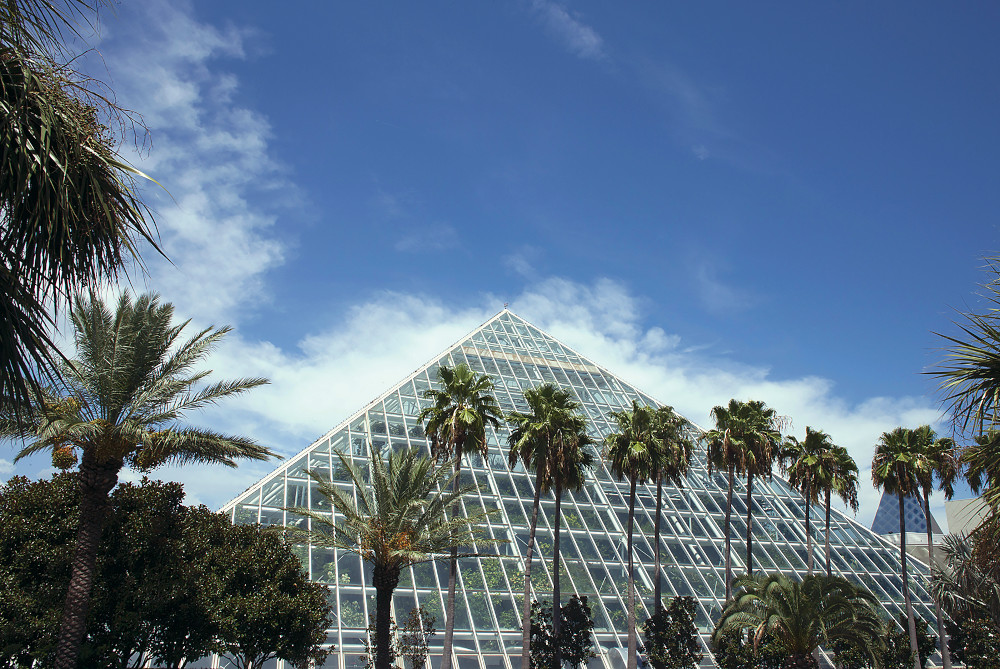When word got out last November of the surprise first-ever U.S. appearance by a South American bird in Corpus Christi, fans flocked to the city for a look, including a just-engaged couple who drove more than seven hours from western Texas.
Their quarry was the cattle tyrant, a small yellow-bellied flycatcher that may have been diverted northward by a Pacific storm or arrived on a ship. The faithful tracked this instant celebrity from a park to an apartment patio to an alleyway, where it perched on a dumpster and feasted on flies.
Year-round birding tourism produces big economics throughout Texas, which hosts the most bird species of any U.S. state. Each spring, some 2 billion migratory birds fly over Texas via two convergent avian superhighways, the Central and Mississippi Flyways. South Texas alone is home to some 659 different species. Corpus Christi, with more than 200 resident birds, has claimed “America’s Birdiest City” honors for a decade. Events include the annual month-long, statewide Great Texas Birding Classic.
Weaving such an activity into your meeting agenda, whether with the aim of teambuilding or just giving your attendees an opportunity to take a break from the four walls of the meeting room, can both promote wellness and educate groups about the climate and ecology of South Texas. Offering instant connection to the natural world, bird watching is scientifically proven to reduce stress, help people with depression and dementia, and promote overall well-being. Today, however, the joy comes with despair as multiple escalating threats, including climate change and habitat destruction, are devastating bird species and populations around the world.
Global inter-agency protection and conservation strategies are helping to reverse the crisis. As Jordan Rutter, director of communications for Washington, D.C.-based American Bird Conservancy (ABC) shared with me, though, “anything short of an all-in, all-out, top-down, bottom-up effort risks bird losses and extinctions that will impact the entire planet.”
Avian appreciation and advocacy are simple. Learn a few birds by sight and song and greater curiosity, interest and involvement irresistibly take wing. For groups, South Texas’ long legacy of stewardship offers unparalleled educational, ecotourism—and enjoyment—opportunities.
Celebrating a Century of Conservation
Prized for their feathers, waterbirds suffered the most among the rampant slaughter of 40-plus bird species during the late 1800s and early 1900s for the U.S. hat industry. Conservationists responded by establishing Audubon Societies, formed in 1905 as the National Association of Audubon and renamed The National Audubon Society in 1940.
In 1923, Audubon leased its first Texas island as a sanctuary for endangered wading birds. Becoming the last refuge of the nearly extinct reddish egret, that original asset, Green Island, today anchors 175 Audubon-managed island sanctuaries along the 367-mile-long Texas coast. The chain collectively protects 20-plus species of waterbirds representing up to 75,000 nesting pairs, including egrets, herons and roseate spoonbills. Coastal Texas also provides vital stopover sites and wintering grounds for virtually all long-haul migratory birds in North America.
Another champion was President Theodore Roosevelt, who established the National Wildlife Refuge System by setting Florida’s tiny Pelican Island aside as a bird refuge in 1903. Managed by the U.S. Fish and Wildlife Service, this network of 570-plus land and water refuges today protects countless species and offers prime wildlife watching opportunities.
Crown jewels of the system include Aransas National Wildlife Refuge. Established in 1937, this 115,000-acre coastal wilderness, an hour-plus north of Corpus Christi via an epic expanse of farmland, is renowned as the wintering home of the last wild flock of endangered whooping cranes in the nation. For adventurous groups making the drive (vans and buses welcome, with cash-only entrance free), a true walk on the wild side awaits.
Between hiking the various coastal and forest trails and driving the 16-mile car loop, I encountered five alligators, startled a squadron of sleeping javelinas, halted the car for deer and a coyote, and spotted multiple waterbirds, including a pair of reddish egrets. Rising 20 feet and 40 feet above ancient oak trees, two observation towers offer panoramic bay and forest canopy views.
The Refuge lies along the Great Texas Coastal Birding Trail. Established in 1996 as the nation’s first—and, at 2,110 miles, longest—birding trail, this network of 43 hiking and driving trails links 310 birding sites along the Texas coast.
[Related: How Houston Is Making Big Strides in the Meetings and Conventions Market]
Get in the Mood for Birding

Founded in 1983 as a horse-riding arena offering a hippotherapy (equine) rehabilitation program for people with head injuries, Moody Gardens has since evolved into a premier tourism and meetings destination. This Galveston gem also serves as a non-profit educational destination that uses nature to advance rehabilitation, conservation, recreation and research.
Signature venues include the Rainforest Pyramid, which houses more than 1,700 exotic plant and animal species from the rainforests of Asia, the tropical Americas and Africa. Rentals for 300-plus gatherings include encounters with rare and threatened birds such as the Bali Myna from Indonesia, one of the world’s most critically endangered species.
Other group programs, also available at the adjacent Aquarium Pyramid, include behind-the-scenes tours, customized learning, teambuilding and scavenger hunts.
Where Birds of a Feather Flock Together
Resources for local birding and wildlife tours include Greg Whittaker, general curator at Moody Gardens. An avid birder who chairs Houston Audubon’s board, Whittaker is also involved with FeatherFest, Moody Gardens’ annual four-day birding and nature photography festival held each April.
Other South Texas festivals include the Laredo Birding Festival (February) and Rio Grande Valley Birding Festival in Harlingen (November).
Preserving a 1930s estate, group-capable Quinta Mazatlan is the McAllen wing of the World Birding Center. Located between Brownsville and Corpus Christi, the historic group-capable King Ranch, the largest in the nation at 825,000 acres, is an ABC-designated “Globally Important Bird Area” and offers a range of birding experiences.
Coastal highlights include the Whooping Crane Festival in Port Aransas (February) and Rockport-Fulton HummerBird Celebration (September).
This April, I attended the Birdiest Festival in America in Corpus Christi. Held at the event-ready South Texas Botanical Gardens and Nature Center, the program included a morning bird walk led by veteran birder Edgar “Sandy” Dillard, who has observed 2,209 species worldwide to date. Sightings included the golden-fronted woodpecker; the shrike, or butcherbird, which impales prey on thorns or barbed wire; and magnificent painted bunting.
[Related: These Group Offsites and Activities Can Only Be Experienced in Austin, Texas]
CSR Ideas to Protect Prominent Birding Locales in South Texas
Maintaining a healthy environment is critical to the survival of such magnificent birding locations such as South Texas. However, threats exist. Plastics constitute most land and sea garbage globally. According to the ABC, approximately 17.6 billion pounds of plastic enter the world’s oceans every year, 80% of it from the land, and is then carried by tides around the planet.
CSR-minded groups can join the effort to protect these South Texas environs. Home to the Leonabelle Turnbull Birding Center and Patton Center for Marine Education, attractive group destination Port Aransas’ commitment to sustainability includes initiatives such as Save Our Beaches.
Joining stewardship specialist Cameron Fowler from the Port Aransas Tourism Bureau & Chamber of Commerce on an impromptu beach cleanup, she picked up a plastic hangar and looked for telltale bites from parrot fish and sea turtles.
“Plastics attract microbes and smaller organisms which emit a smell that marine life and seabirds confuse with food,” she explained. “From ingestion and entanglement to habitat destruction, plastic trash kills countless birds, fish and other wildlife every year.”
How quickly we filled our sacks with plastic and metal fragments, bottles and cans, toothbrushes and other debris. Ask your Port Aransas and other Texas CVB hosts about organized cleanups and other ecotourism activities—contributing to the critical all-in effort takes everyone.






